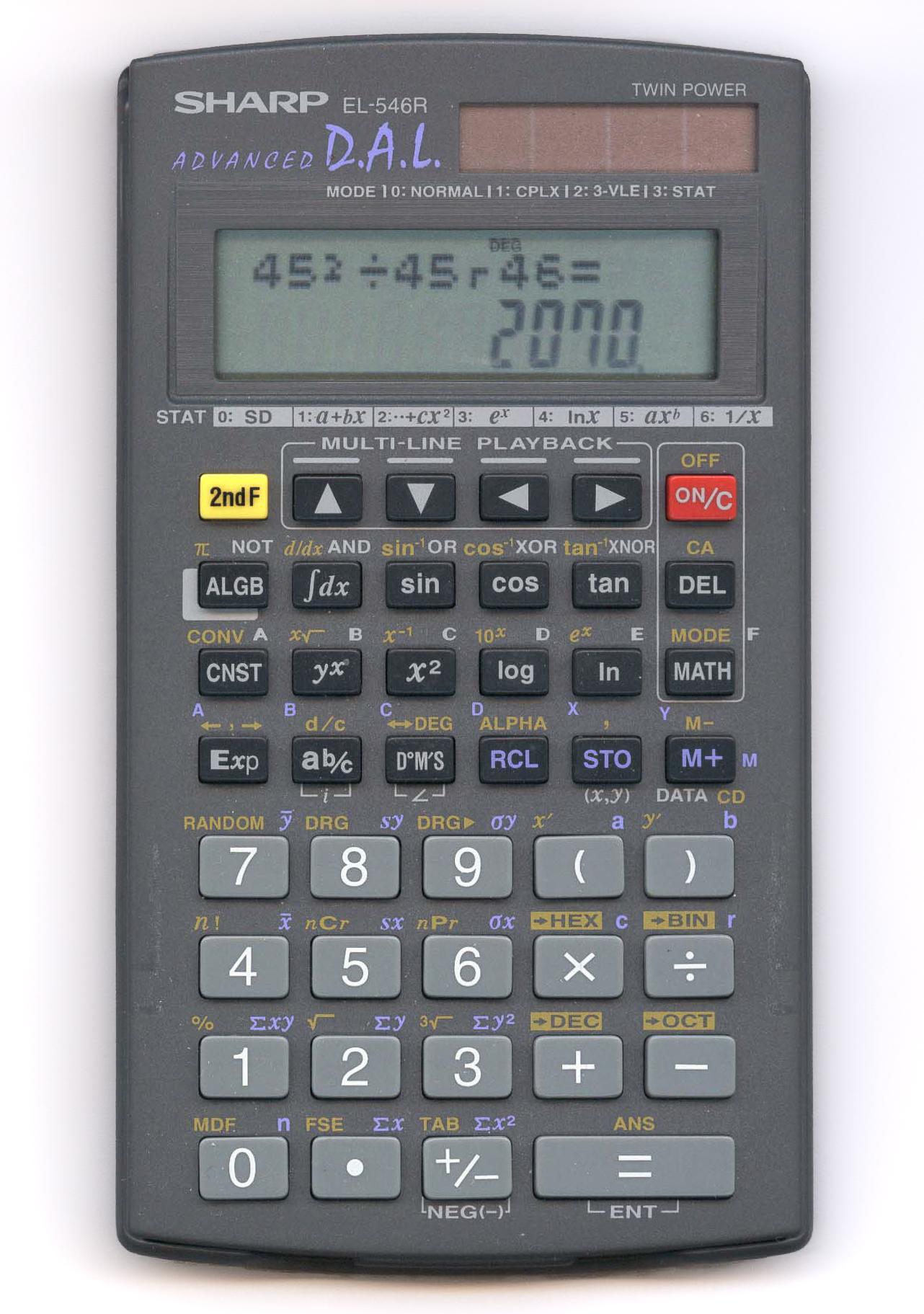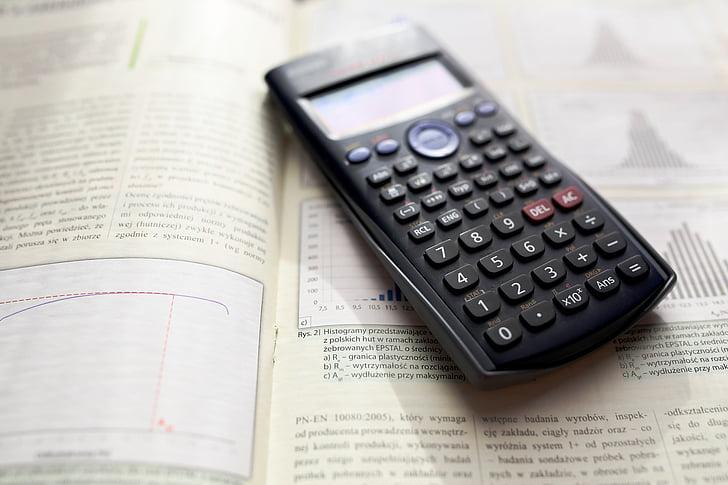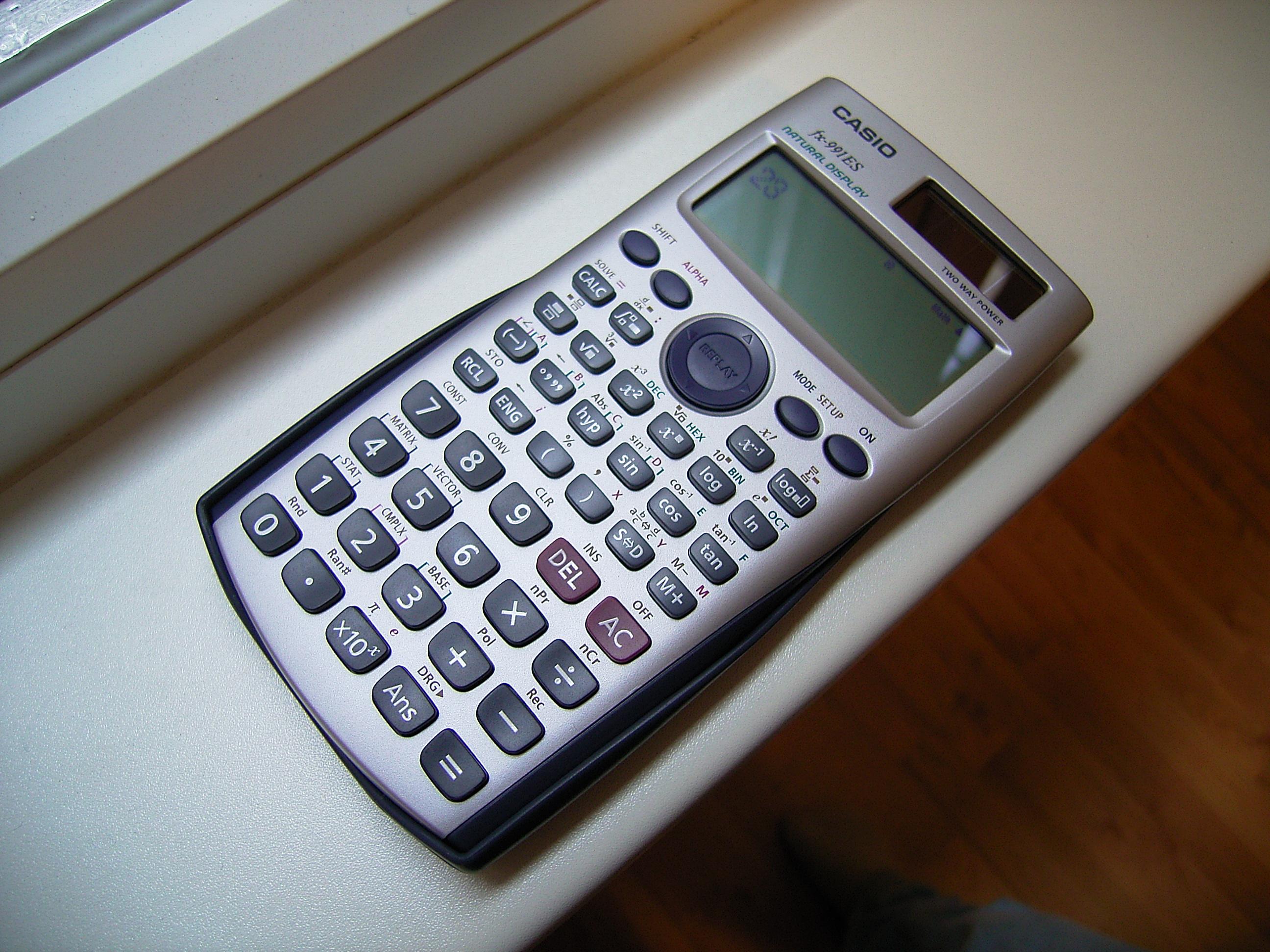
In a world where calculations are an essential part of our everyday lives, it’s hard to imagine getting by without the help of a trusty calculator. From basic arithmetic to complex mathematical operations, this handheld device has revolutionized the way we solve problems. Whether you’re a student struggling with long equations or a professional seeking efficient ways to crunch numbers, mastering the art of using a calculator efficiently is a skill that can greatly enhance your productivity. In this article, we will guide you through the basics and provide expert tips on how to make the most of this powerful tool. So, grab your calculator and let’s dive into the fascinating realm of numerical efficiency.
Introduction to Calculator Functions and Operations
When it comes to performing mathematical calculations, calculators have become indispensable tools. Whether you’re a student, professional, or just someone trying to solve a simple equation, having a calculator handy can save you time and effort. In this post, we will dive into the world of calculator functions and operations, and explore how to use a calculator effectively for various tasks.
Modern calculators are equipped with a wide range of functions that go beyond basic addition, subtraction, multiplication, and division. These advanced functions are designed to handle complex calculations and help you solve a variety of mathematical problems. Some common functions you might encounter include:
- Exponents: Calculating powers and square roots.
- Trigonometric functions: Computing sine, cosine, and tangent of angles.
- Logarithms: Determining the exponent to which a specified base must be raised to obtain a given value.
- Memory functions: Storing and recalling numbers for later use.
When using a calculator, it’s essential to understand the order of operations. Just like in mathematics, calculators follow a specific hierarchy of operations to obtain accurate results. The acronym PEMDAS can help you remember the correct sequence:
- Parentheses
- Exponents
- Multiplication and Division (from left to right)
- Addition and Subtraction (from left to right)
By following this order, you can avoid errors and ensure that your calculations are performed correctly. It’s always a good practice to use parentheses when needed to clarify the order of operations, especially when dealing with complex equations.
Some calculators also offer additional features such as graphing capabilities, matrix operations, and statistical calculations. These advanced functionalities can be particularly useful for students, engineers, and professionals working in various fields. Always refer to the user manual or consult online resources to learn how to make the most out of your specific calculator model.

Understanding the Basic Buttons and Functions on a Calculator
Calculators are essential tools for everyday math calculations. Whether you’re a student, professional, or just someone who needs to crunch numbers, is crucial. In this post, we will guide you through the various features of a calculator and how to use them efficiently.
Standard Buttons
On most calculators, you’ll find a set of standard buttons that allow you to perform basic arithmetic operations. These buttons include the addition (+), subtraction (-), multiplication (x), and division (/) symbols. To perform a calculation, simply press these buttons in the correct order, just like you would on paper.
Memory Functions
Calculators often come with memory functions that allow you to store and recall numbers for future use. The most common memory buttons are “M+”, “M-“, and “MR”, which stand for ”Add to Memory”, “Subtract from Memory”, and ”Memory Recall” respectively. To store a number in memory, simply enter the value and press “M+”. You can then recall it later by pressing “MR”.
Special Functions
In addition to basic arithmetic operations, calculators also offer a range of special functions. These functions are designed to help with more complex calculations. Some common special functions include trigonometric functions (sin, cos, tan), logarithms (log), square roots (sqrt), and exponential functions (exp). To use these functions, you’ll need to enter the value and then press the corresponding button.
Percentages and Decimals
Working with percentages and decimals is a breeze with a calculator. To calculate a percentage, simply enter the number followed by the ”%” sign. For example, to calculate 20% of 50, enter “50”, followed by “%”, and then press “=” to get the answer. When working with decimal numbers, most calculators have a decimal point “.” button, allowing you to enter and work with decimal values effortlessly.
Advanced Features
Many calculators come equipped with advanced features that can be immensely helpful for specific tasks. These features may include statistical functions, financial calculations, unit conversions, and more. While the specific buttons and functions may vary depending on the calculator, they are typically labeled clearly and come with an instruction manual for your reference. Exploring these advanced features will help you make the most out of your calculator and simplify complex calculations.

Mastering Arithmetic Calculations with a Calculator
Paragraph 1:
Calculators have long been an invaluable tool for individuals seeking to simplify complex arithmetic calculations. While their basic functions are straightforward, understanding how to maximize their potential is crucial. Whether you’re a student looking to ace your math exams or a professional needing to crunch numbers swiftly, learning how to use a calculator effectively can significantly enhance your computational abilities. In this post, we will explore essential tips and techniques to help you master arithmetic calculations using a calculator.
Paragraph 2:
Familiarizing yourself with the layout and functions of your calculator is the first step towards efficient usage. Start by identifying the various buttons on your device - from the essential number pad to the operator buttons, memory functions, and mathematical symbols. Knowing where these buttons are located and their respective functions will save you precious time during calculations. Additionally, refer to your calculator’s manual to understand any built-in features or advanced functions that could simplify your work further.
Paragraph 3:
Utilizing the memory functions on your calculator strategically can streamline your calculations. The ability to store and recall values, known as memory recall and memory store functions, respectively, can be particularly handy. Suppose you frequently encounter a recurring number or intermediate result during a calculation. In that case, you can store it in your calculator’s memory and reuse it whenever necessary, eliminating the need to re-enter the value repeatedly. This feature is especially beneficial for complex equations or lengthy calculations.
Paragraph 4:
Another useful feature to master is the percentage calculation capability of your calculator. Whether you need to determine a percentage of a value or find the percentage increase or decrease between two numbers, your calculator can provide instant results without the need for manual conversions or complex formulas. To perform percentage calculations, identify the percentage button on your calculator, typically denoted by the symbol “%”, and refer to your device’s manual for the specific steps to execute different percentage calculations.
Paragraph 5:
When dealing with extensive data sets or calculations involving multiple steps, the ability to review and edit your entries is essential. Most calculators offer a handy feature called “backspace” or “delete” that allows you to erase erroneous or unnecessary keystrokes quickly. Knowing how to backtrack and fix mistakes efficiently will save valuable time and minimize errors in your calculations. Familiarize yourself with this function and practice using it to develop confidence in your ability to correct any errors effortlessly.
| Shortcut | Description |
|---|---|
| +/- | Toggle between positive and negative numbers |
| % | Perform percentage calculations |
| M+ | Add current value to memory |
| MR | Recall the value stored in memory |
| DEL | Erase last entered digit or character |

Performing Advanced Mathematical Operations with a Calculator
To perform advanced mathematical operations with a calculator, you’ll need to familiarize yourself with a few key functions and features. Whether you’re a student preparing for exams or a professional working with complex equations, knowing how to utilize these tools efficiently can save you time and increase your accuracy. In this section, we’ll explore some useful tips and tricks for maximizing the potential of your calculator.
Explore the functions: Most calculators come equipped with a wide range of functions beyond the basic addition, subtraction, multiplication, and division. These advanced features include logarithms, exponentials, trigonometric functions, and more. Familiarize yourself with the function symbols and where to find them on your calculator. Some models even offer graphing capabilities for visualizing mathematical functions.
Memorize shortcut keys: To speed up your calculations, many calculators have shortcut keys that allow you to perform common operations with a single press. These shortcuts often include accessing the memory functions, toggling between degrees and radians for trigonometric functions, and switching between different number systems such as decimal, binary, or hexadecimal. Refer to your calculator’s manual for a comprehensive list of available shortcuts.
Utilize parentheses: When dealing with complex equations, parentheses can help you prioritize calculations and ensure the correct order of operations. In some cases, forgetting to include parentheses can lead to drastically different results or errors. Get into the habit of using parentheses, especially when dealing with fractions, exponents, and nested calculations. Remember that most calculators will calculate expressions within parentheses first before moving on to other operations.
Take advantage of memory functions: Calculators often come with memory functions that allow you to store and recall numbers for future use. These functions can be particularly useful when working with recurring values or performing multiple calculations using the same number. Don’t forget to clear the memory after you’ve finished using it to avoid any unintended errors in subsequent calculations.
Practice order of operations: It’s important to understand the order of operations to obtain accurate results. Remember the acronym BEDMAS (or PEMDAS), which stands for Brackets, Exponents, Division and Multiplication (from left to right), and Addition and Subtraction (from left to right). Knowing the correct order will help you determine where to use parentheses and ensure you get the correct answer every time.
By applying these tips and taking the time to explore your calculator’s functions, you’ll be well-equipped to tackle advanced mathematical operations with ease. Remember to consult your calculator’s manual for any specific instructions or features unique to your device. Practice using these techniques regularly, and soon you’ll be performing complex calculations efficiently and accurately.
Tips and Tricks for Efficient Calculator Usage
Whether you’re a student, a professional, or simply someone who uses a calculator on a regular basis, knowing how to make the most of this handy tool can save you time and effort. Here are some practical tips and tricks to help you become more efficient in using a calculator:
1. Master the basic functions: Familiarize yourself with the essential operations of addition, subtraction, multiplication, and division. Being fluent in these basic functions will make any calculation smoother and quicker. Additionally, take some time to understand how to clear the memory and reset the calculator to its default settings.
2. Utilize memory functions: Many calculators have memory functions that allow you to store and recall numbers. This can be particularly useful when dealing with long and complex calculations. Take advantage of these memory slots to store intermediate results and retrieve them when needed. Consult your calculator’s user manual to learn how to use these features effectively.
3. Explore advanced features: Most calculators offer a range of advanced functions beyond the basic math operations. Take the time to explore these features and understand their functionalities. Some calculators have trigonometric, logarithmic, and statistical functions. Knowing how to access and utilize these additional capabilities can significantly enhance your calculator proficiency.
4. Utilize shortcuts: Many calculators have built-in shortcuts to speed up calculations. For example, you can use the “multiply” key instead of entering the multiplication sign repeatedly. Similarly, the “square root” key can save you time when finding the square root of a number. Familiarize yourself with these shortcuts to accomplish calculations more swiftly.
5. Increase precision with rounding: Calculators often display results with a specific number of decimal places. However, depending on your needs, you might require a higher level of precision. In such cases, make sure to round your intermediate results only when necessary, to avoid inaccuracies. Many calculators also have rounding functions that allow you to round to a specific decimal point, further simplifying your calculations.
Q&A
Q: Why is it important to know how to use a calculator?
A: Being proficient in calculator usage can greatly simplify mathematical calculations, saving time and reducing the likelihood of errors. It is an essential skill for students, professionals, and anyone who deals with numbers regularly.
Q: What are the basic functions of a calculator?
A: A standard calculator typically performs basic arithmetic operations like addition, subtraction, multiplication, and division. Some models also include advanced functions such as square roots, percentages, exponentiation, logarithms, and trigonometric calculations.
Q: How do I turn on a calculator?
A: Most calculators feature an on/off button, which is typically indicated by a power symbol like a small circle with a line on top. Pressing this button will activate the calculator and display a result or a prompt, if necessary.
Q: How can I input numbers on a calculator?
A: Calculators usually have a numeric keypad with digits 0-9, arranged in a similar fashion to a telephone keypad. Simply press the buttons corresponding to the desired digits to input numbers.
Q: How do I perform basic arithmetic calculations?
A: To add or subtract numbers, use the “+” or “-” button respectively. For multiplication, press the “x” or “*” button, and for division, use the “/” button. Enter the numbers and press the corresponding operator to yield an accurate result. Make sure to observe the order of operations (BODMAS/PEMDAS) when performing complex calculations.
Q: Can I calculate percentages using a calculator?
A: Yes, most calculators have a percentage function. To calculate a percentage, you typically need to enter the number, press the “%” button, and then input the percentage you want to calculate. The result will be displayed as a decimal or a percentage, depending on the calculator model.
Q: How do I clear the calculator’s display?
A: Most calculators have a “C” or “AC” button to clear the display or cancel the current calculation. Pressing this button will reset the calculator and allow you to start a new calculation.
Q: Are there any additional features on a calculator?
A: Yes, advanced calculators often offer extra functions like memory recall and storage, scientific notation, complex numbers, statistical calculations, and even graphing capabilities. However, these features depend on the specific model and may vary.
Q: Can calculators make mistakes?
A: Although calculators are designed to provide accurate results, human error can still occur. It is essential to input numbers and equations correctly and double-check the results when necessary. Additionally, using reputable calculator brands and regularly updating software can minimize any potential errors.
Q: Are there any learning resources available to enhance calculator proficiency?
A: Yes, there are various online tutorials, educational videos, and user manuals available to help individuals improve their calculator skills. Additionally, many educational institutions may offer courses or workshops focused on calculator usage, enabling students and professionals to enhance their proficiency. In conclusion, mastering the art of using a calculator is a fundamental skill that can greatly enhance our mathematical abilities and daily lives. The ability to swiftly and accurately perform arithmetic computations is now at our fingertips, thanks to these modern gadgets. By understanding the basic functions and features, as well as employing efficient strategies, we can make the most of these powerful tools. From simple calculations to complex equations, a calculator remains an indispensable partner that effortlessly aids us in our mathematical endeavors. So, whether you are a student, a professional, or someone who simply wants to simplify their mathematical tasks, remember that with a calculator by your side, you have the power to crunch numbers with ease and confidence. Happy calculating!






